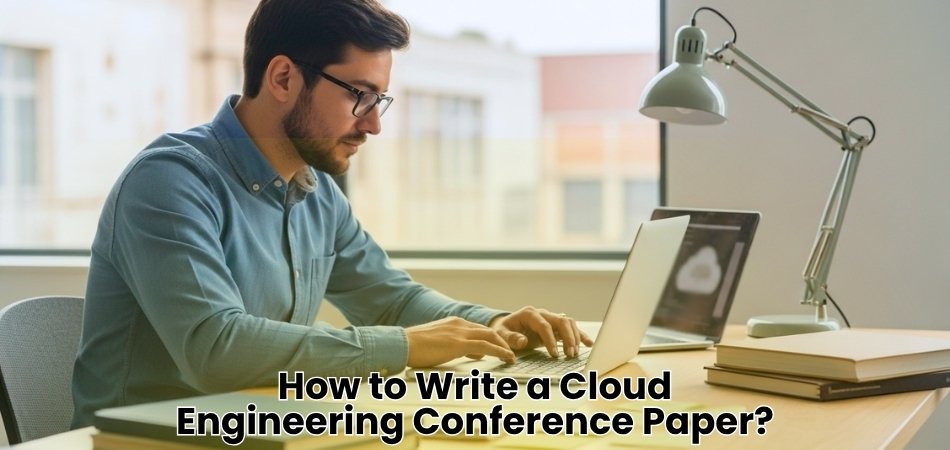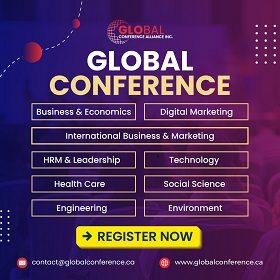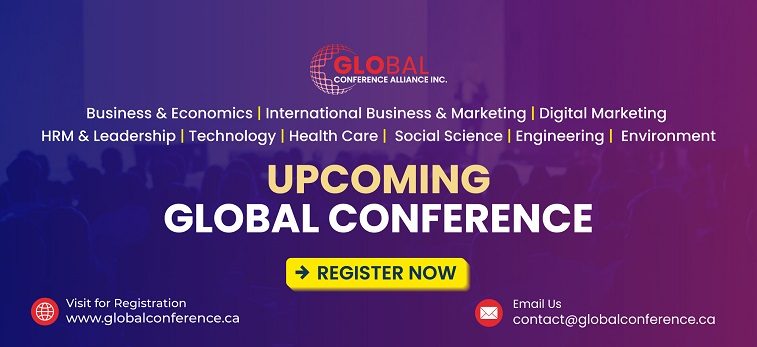Writing a cloud engineering conference paper is one of the best ways to share your ideas, solutions, and technical work with the right people. It can help others understand new approaches in cloud systems while giving you recognition in the field. You might already be thinking about how to write a cloud engineering conference paper?
To write a cloud engineering conference paper, align with the event theme, choose a strong topic, and follow standard structure—title, abstract, introduction, methodology, results, and conclusion. Use clear language, show original work, and back claims with data. Review guidelines and proofread before submitting.
Are you curious to know what reviewers look for or how to structure your abstract? Keep reading this article because everything you need to understand, write, and submit a great cloud engineering conference paper is explained clearly and in full detail below.
How to Write a Cloud Engineering Conference Paper?
Cloud engineering conference papers open the door to sharing research, ideas, and solutions with the wider cloud computing community. This guide will help you move through the process step by step.
1. Understand the Conference and Its Scope
Before you start writing, it’s crucial to understand the specific conference you’re targeting.
- Conference Theme/Call for Papers (CFP): Every conference has a specific theme or set of topics it focuses on. Carefully read the “Call for Papers” to ensure your topic aligns with their interests. This is often available on the conference website. For cloud engineering, topics often include:
- Cloud architecture and design
- Cloud security and privacy
- Cloud migration strategies
- Serverless computing
- Containerization (Docker, Kubernetes)
- DevOps in the cloud
- Cloud cost optimization
- Edge computing and IoT in the cloud
- AI/ML in the cloud
- Cloud management and orchestration
- Performance and reliability in cloud systems
- Novel cloud applications or services
- Audience: Consider who will be attending the conference. Are they researchers, practitioners, or a mix of both? Tailor your language and depth of explanation accordingly.
- Submission Guidelines: Pay close attention to the conference’s specific formatting requirements, page limits, citation style (e.g., IEEE, ACM), and submission deadlines. Failing to follow these can lead to automatic rejection.
If you’re preparing for conferences, especially for international events like conferences in USA, Canada, or any other country where expectations for technical precision and innovation are high, aligning your topic and submission with global standards becomes even more important.
2. Choose a Compelling Topic
Here, your topic should be:
- Novel or Significant: It should present new findings, a unique approach to an existing problem, or a substantial analysis of a relevant cloud engineering issue. Avoid rehashing well-known concepts unless you’re offering a new perspective or a detailed case study.
- Relevant: Directly addresses a current challenge or trend in cloud engineering.
- Feasible: You should have sufficient research, data, or practical experience to support your claims and complete the paper within the given timeframe.
- Problem-Solution Focused: A strong paper often identifies a problem, proposes a solution, and defends that solution with evidence.
3. Structure Your Paper (Standard Sections)
Most conference papers follow a similar structure. Here’s a typical outline:
a. Title
- Concise and Informative: Clearly indicates the paper’s main subject and, ideally, its key contribution. Use strong keywords relevant to cloud engineering.
- Example: “Optimizing Container Orchestration for Serverless Workloads in Hybrid Cloud Environments”
b. Abstract
- Short Summary: A concise (typically 150-250 words) overview of your entire paper.
- Key Elements:
- Problem statement: What issue are you addressing?
- Approach/Methodology: How did you tackle the problem?
- Key Results/Findings: What did you discover or achieve?
- Conclusion/Implications: What’s the significance of your work?
- Keywords: Include relevant keywords that help others find your paper.
c. Introduction
- Hook the Reader: Start with a broad statement about the importance of cloud computing and then narrow down to your specific area of focus.
- Background/Context: Provide necessary background information for readers to understand your topic.
- Problem Statement: Clearly articulate the problem your paper addresses and why it’s important to solve.
- Motivation: Explain why this problem is worth investigating.
- Contributions: Briefly state what your paper contributes to the field (e.g., a new algorithm, a novel architecture, an experimental analysis).
- Paper Organization: Briefly outline the structure of the rest of the paper.
d. Related Work/Literature Review
- Survey Existing Research: Discuss previous studies, approaches, and solutions relevant to your topic.
- Identify Gaps: Highlight what existing work doesn’t address or where your work differs and provides improvements. This strengthens the novelty of your contribution.
- Acknowledge Others: Properly cite all sources to give credit and demonstrate your understanding of the field.
e. Methodology/Approach
- Detailed Explanation: Describe how you conducted your research or developed your solution. This section should be detailed enough for others to replicate your work if desired.
- For Cloud Engineering, this might include:
- System Architecture: If proposing a new system, illustrate its components and how they interact.
- Algorithms/Techniques: Explain any new algorithms, models, or techniques used.
- Experimental Setup: Describe the cloud environment (e.g., AWS, Azure, Google Cloud), tools, datasets, and configurations used.
- Simulation/Modeling: If using simulations, explain your methodology and parameters.
- Implementation Details: Provide technical details about how your solution was implemented.
f. Results and Discussion
- Present Findings: Clearly present the outcomes of your research or the performance of your proposed solution. Use tables, graphs, and figures to visualize data effectively.
- Analyze and Interpret: Don’t just present data; explain what the results mean. Discuss the implications of your findings in the context of your problem statement and related work.
- Address Hypotheses: If you had hypotheses, discuss whether your results support or refute them.
- Limitations: Acknowledge any limitations of your study or approach.
g. Conclusion
- Summarize Key Findings: Briefly reiterate the main problem addressed, your approach, and your most significant results.
- Restate Contributions: Emphasize the unique contributions of your work.
- Implications: Discuss the broader impact or significance of your findings for the cloud engineering field.
- Future Work: Suggest areas for future research or extensions of your current work.
h. References
Accurate and Consistent: List all sources cited in your paper using the specified citation style. Use a reference manager if possible to ensure accuracy and consistency.
i. Appendices (Optional)
Include supplementary material that is too detailed for the main body but useful for a deeper understanding (e.g., detailed algorithms, extensive datasets, code snippets).
4. Writing Tips for Cloud Engineering Papers
- Clarity and Conciseness: Use clear, precise language. Avoid jargon where simpler terms suffice, but use technical terms correctly when necessary.
- Active Voice: Generally, prefer active voice (e.g., “We developed a new algorithm” instead of “A new algorithm was developed”).
- Figures and Tables: Use them effectively to convey complex information visually. Ensure they are well-labeled, easy to understand, and referenced in the text.
- Technical Accuracy: Double-check all technical details, definitions, and data.
- Originality: Ensure your work is original and properly attributes any external sources. Avoid plagiarism.
- Logical Flow: Ensure a smooth transition between paragraphs and sections. Each section should build upon the previous one.
- Strong Argumentation: Back up your claims with evidence, data, and logical reasoning.
- Quantify When Possible: Use metrics and performance indicators to demonstrate the effectiveness of your solution (e.g., latency, throughput, cost savings, resource utilization).
5. Review and Refine
- Self-Review: Read your paper carefully for clarity, coherence, grammar, spelling, and adherence to guidelines.
- Peer Review: Ask colleagues or mentors familiar with cloud engineering to review your paper. They can offer valuable feedback on technical content, clarity, and potential weaknesses.
- Proofread: Catch any remaining typos or grammatical errors. Reading aloud can help identify awkward phrasing.
- Check Conference Guidelines Again: Before final submission, do one last check against all the conference’s submission requirements.
By following these steps, you can increase your chances of writing a high-quality cloud engineering conference paper that gets accepted and makes a meaningful contribution to the field. Good luck!
What Reviewers Look for in Cloud Engineering Conference Paper Submissions?
Understanding what reviewers look for can make a big difference in getting your cloud engineering paper accepted. They don’t just skim—they focus on key elements that make a paper stand out. Let’s break it down.
Clear and Simple Writing
Every paper needs to explain ideas in a way that’s easy to follow. Reviewers often pass on papers that are too confusing or packed with complex terms. If your writing is clear and organized, it shows you understand your topic. Use short sentences, avoid extra-long paragraphs, and explain any technical words. Try to guide the reader through your work, step by step, like telling a story. That way, they won’t get lost while reading.
Original Ideas
People reading your paper want to see something new. If your idea sounds just like others they’ve read before, it won’t grab their attention. That’s why picking a fresh topic is so important. One of the key factors that influences reviewer decisions is how novel the idea is—this makes selecting an original research topic for cloud engineering conference submissions all the more important for standing out. Even a small twist on an old idea can make a big difference.
Honest and Testable
Papers that explain how others can try out the same work usually get more points. If you used a method or ran tests, share the details—like the tools, settings, or data you used. This helps reviewers trust that your work is solid and not just guessed. Also, if someone wants to repeat your steps, they’ll be able to do that easily because you gave them the full picture.
Matches the Theme
Reviewers want papers that fit the event. If the conference is about cloud tools or services, your paper should talk about those things. Don’t go off-topic or write about something that feels unrelated. Before you write your paper, check what the event is asking for. They usually list the topics they care about. If your paper lines up with those topics, it’s much more likely to get picked.
Adds Real Value
A strong paper doesn’t just talk—it teaches or helps. Reviewers are looking for something that gives real value to the cloud computing world. Maybe your paper solves a common problem, makes a process better, or explains something in a way that’s never been done. The best papers make readers say, “This is useful” or “I didn’t think of it that way before.” That kind of impact matters a lot.
Getting your paper accepted isn’t just luck—it’s about knowing what matters to reviewers. Focus on making your work clear, original, and useful. Keep everything honest and easy to follow. When you do that, your paper has a much better chance of getting noticed.
Tips to Format and Cite Tools and Platforms Used in Cloud Engineering Conference Research
Effectively formatting and citing the cloud services, APIs, open-source projects, and tools (like Kubernetes, Terraform, AWS S3, Azure Functions) used in your cloud engineering conference research is crucial for several reasons:
- Reproducibility: Allows other researchers and practitioners to understand and potentially replicate your work.
- Transparency: Clearly attributes the components of your system or methodology.
- Credibility: Demonstrates your understanding of the tools and adherence to academic standards.
- Best Practices: Follows established conventions for technical writing.
Here are best practices for referencing these elements within your paper, considering common citation styles like IEEE and ACM:
General Principles
- Be Specific: Don’t just say “we used AWS.” Specify which service (e.g., “AWS Lambda,” “Amazon S3,” “Amazon EC2”).
- Include Version Numbers: For open-source tools and frameworks (Kubernetes, Terraform, Ansible, etc.), the version number is critical for reproducibility. Cloud service APIs might also have versioning.
- Provide Context: Briefly explain why you chose a particular tool or platform, especially if it’s not immediately obvious.
- Consistency: Once you choose a citation style (IEEE, ACM, etc.) and a method for referencing tools, stick to it throughout the paper.
- Official Documentation/Repository: Prioritize citing official documentation, whitepapers, or the official GitHub repository for open-source projects.
- Accessibility: If possible, provide URLs that are stable and publicly accessible.
In-Text Referencing
First Mention
When you first mention a cloud service, API, or tool, you typically introduce it clearly.
- Formal Name: Use the full, formal name. For example, “Kubernetes” not “K8s,” “Amazon Web Services (AWS) S3” not “S3.”
- Acronyms: If you use an acronym, define it upon first use: “We deployed our application on Kubernetes (K8s) version 1.28.”
- Trademark/Copyright: While less common in academic papers, some tools might have ™ or ® symbols. You generally don’t need to include these in your text, but be aware of them.
Examples:
- “Our system utilizes Amazon S3 for persistent object storage and AWS Lambda for serverless function execution.”
- “Infrastructure provisioning was managed using Terraform version 1.5.0.”
- “The container orchestration layer was handled by Kubernetes (K8s) version 1.29.”
- “We integrated with the Stripe API (version 2023-10-16) for payment processing.”
Subsequent Mentions
After the first full mention, you can use the acronym or a shorter, commonly understood name.
Examples:
- “Data was uploaded directly to S3.”
- “Terraform modules were used for resource definition.”
- “The application scaled dynamically within the K8s cluster.”
Reference List Formatting (Examples for IEEE and ACM)
The key is to treat these tools and platforms as software, websites, or technical reports, depending on the available information. Always check the specific conference’s guidelines first!
IEEE Style (Numerical Citations)
IEEE typically uses numbered citations in square brackets, e.g., [1], [2, 5], [3]–[6]. The full reference list is ordered numerically by the order of appearance in the text.
General Guidelines for IEEE:
- Websites/Documentation: [#] A. Author, “Page Title,” Website Name, Abbrev. Month Day, Year. [Online]. Available: URL. [Accessed: Abbrev. Month Day, Year].
- Software/Tools (with known authors/organizations): Treat as a technical report or a web document.
- Open-Source Projects (GitHub): Cite the repository.
Examples:
- Kubernetes (Official Documentation/Project): [1] The Kubernetes Authors, “Kubernetes Documentation,” kubernetes.io. [Online]. Available: https:/ /kubernetes. io/docs/. [Accessed: Jul. 23, 2025]. Alternatively, if a specific release or whitepaper exists: [2] B. Burns et al., “Borg, Omega, and Kubernetes,” Google, Tech. Rep.., 2015. [Online]. Available: https:/ /static.googleusercontent.com/media/research.google. com/en//pubs/archive/ 44863.pdf. [Accessed: Jul. 23, 2025].
ACM Style (Author-Year or Numbered)
ACM has evolved and now often uses a numbered style, similar to IEEE, but with slightly different formatting details. Some older ACM publications might use an author-year style. Always check the specific conference’s ACM template. We’ll focus on the common numbered style.
General Guidelines for ACM:
- Numbered References: References are numbered sequentially in the order they appear in the text.
- Author Names: ACM prefers full names rather than initials if available.
- DOI (Digital Object Identifier): Include DOI if available, especially for papers about the tools.
- Access Date: Less strict on access dates compared to IEEE, but good to include for volatile web content.
Examples (using a common ACM numbered format):
- Kubernetes (Official Documentation/Project): [1] The Kubernetes Authors. Kubernetes Documentation. Accessed July 23, 2025. https:/ /kubernetes. io/docs/. If citing a specific paper: [2] Brendan Burns, Brian Grant, David Oppenheimer, Eric Schlegel, and John Wilkes. 2016. Borg, Omega, and Kubernetes. Communications of the ACM 59, 5 (May 2016), 50–57. DOI: https:/ /doi.org/10. 1145/2890532 (if available, check if a direct paper exists)
By following these tips, you’ll ensure that your cloud engineering conference paper is well-referenced, professional, and contributes effectively to the academic and professional discourse.
How to Structure the Abstract of a Cloud Engineering Conference Paper?
Writing an abstract for a cloud engineering paper might feel tricky, especially when you’re not sure what to include. But if you understand what matters most, it becomes a lot easier. Let’s look at the simple steps below.
Start with the Problem
The first thing your abstract should do is tell the reader what problem you’re trying to solve. Keep it short and simple—don’t try to explain everything at once. Just clearly say what the issue is and why it matters in cloud engineering. This helps the reviewer quickly understand the point of your paper and why they should care about it.
Say What You Did
Once the problem is clear, the next part should explain what you did to solve it. Talk about your method or idea in a few easy lines. You don’t need every single detail, just the main steps or approach. This shows how you tried to fix the problem without overwhelming the reader with too much info at once.
Share the Results
Now that the problem and method are covered, tell them what happened. What did you find out? What worked and what didn’t? You should give a quick summary of your main results—just enough to show your solution made a difference. Try to include some numbers if they help explain the success of your work.
Mention the Impact
Let the reader know why your results are useful. Will your idea save time, cut down costs, or make something more reliable? A short sentence about the bigger benefit helps make your paper feel more important. It also helps reviewers see how your work fits into the wider world of cloud computing.
Keep It Short
Abstracts are meant to be short, so don’t try to squeeze in too much. Around 150 to 250 words is usually perfect. Just focus on the most important parts: problem, method, result, and why it matters. A clear and simple abstract helps the reviewer decide quickly whether your paper is worth reading further.
A good abstract helps the reader understand your paper without reading the whole thing. It should be short but still cover all the key points. Keep your words simple and straight to the point. If done right, it can make your paper stand out to reviewers.
How to Explain Your Cloud Deployment Methodology Clearly in the Cloud Engineering Conference Paper?
Explaining how your cloud system works might sound a bit tough at first. But with a clear plan and simple words, it becomes easier to write. Reviewers want to understand your setup and how it works step by step. Keep reading to learn how to share your method in the best way.
Container Setup
Begin by showing what tools you used to create the containers. It helps to include names like Docker or Kubernetes if they were part of your setup. Talk about what each container does and what it holds inside. Share the base image, any added software, and the overall purpose. Use simple steps so someone else can easily follow along. Clear details make your container setup easy to understand and repeat.
CI/CD Pipelines
Start by talking about how your code goes live in the cloud. If you used something like GitHub Actions, briefly explain how it works. Include testing, building, and deployment steps to show the full process. Don’t leave out any tool that helps run your code smoothly. Reviewers like to see steps that are short but complete. Sharing this shows your system is well-planned and runs without problems.
Load Balancing
To keep everything running smoothly, it’s good to spread the work evenly. Load balancing helps make sure no single server gets too full. If you used tools like NGINX or AWS ELB, make sure to say that. Even simple methods like round-robin should be shared clearly. Write how the system chooses where to send each task. Easy-to-follow steps help people understand how your system stays fast and reliable.
Infrastructure Setup
Use this part to talk about which cloud services you used and why. Maybe you picked AWS, Azure, or something else—be sure to name it. Include details about setting up servers, storage, and networks. Mention tools like Terraform if they helped create your setup. Write each step so others can try the same setup. Keeping it simple helps the reader follow without any confusion or guessing.
Make It Replicable
Think of this part like writing a simple how-to guide for your setup. Break the steps into short, easy parts that make sense. Try not to skip anything that’s needed to make it work. Even small fixes or errors you handled should be shared here. If someone wants to try your setup, they should get the same result. Making it clear shows that your work is solid and can be trusted.
Explaining your method clearly helps others understand and trust your work. Keep every part short, simple, and easy to read and follow. The better you explain, the more useful your paper becomes. Sharing clear steps makes your paper stronger and more helpful too.
Should You Include Cost Analysis in a Cloud Engineering Conference Paper?
Yes, you should strongly consider including a cost analysis in a Cloud Engineering Conference Paper. This is especially true if your research involves resource optimization, service comparisons, or real-world deployment strategies. Cost is a major factor in cloud decision-making. Demonstrating cost savings adds clear, practical value to your work.
Reviewers often look for both performance improvements and real-world impact. A cost analysis helps prove both aspects effectively. It makes your paper more useful for engineers and technical readers. Cost data shows how your solution performs in practical, real-life conditions.
If your paper focuses on improving cloud usage, such as scaling or reducing resource waste, a detailed cost breakdown is very helpful. Show how your method saves money without hurting performance. This matters because long-term savings often matter more than just speed. Charts or tables can make your findings clearer and more convincing.
Comparing services or cloud providers also calls for cost analysis. If two setups perform equally well, the cheaper one is often more attractive. Explaining costs helps readers evaluate the complete trade-off. It gives them more reason to trust and apply your results.
That said, cost analysis is not always necessary in every paper. If your work introduces a new concept without real-world testing, cost may not be your focus. In such cases, you’re showing what might work in the future. But when testing is involved, including cost strengthens your work significantly.
Common Mistakes to Avoid When Writing a Cloud Engineering Conference Paper
Every cloud engineering paper has great potential, but small mistakes can hurt its chances. Whether it’s about explaining your idea or showing real-world value, avoiding simple errors makes a big difference. Even strong research can be ignored if written poorly. Keep reading to learn what to avoid and how to do it better.
Too Much Jargon
Many writers try to sound smart by using a lot of technical terms. But this often confuses readers who just want to understand the main idea. Instead of using big words, focus on clear and simple language. One of the most frequent issues reviewers note is unclear or overly complex language. Focusing on improving technical writing for cloud engineering conferences can make your work easier to understand and more impactful.
Weak Problem Focus
Some papers skip over the main problem and rush into the solution. But if readers don’t know what problem you’re solving, they won’t care about your fix. It’s important to clearly explain the issue right at the start. Show why it matters and how it affects cloud systems. This builds interest and makes your paper feel more important to the reader.
No Real-World Use
Papers that feel too “made-up” or disconnected from real use often get ignored. You need to show how your idea would actually work in a real cloud setup. Use examples, tools, or results from cloud platforms like AWS or Azure. This helps the reader believe that your solution is useful and not just an idea that works only on paper.
Confusing Results Section
Sometimes, results are shared without any meaning behind them. It’s not enough to list numbers and charts—you need to explain what they show. Tell the reader why one setup worked better than another. Mention what surprised you, what worked, and what didn’t. Keep your results clear, and don’t leave the reader guessing about what your work actually proved.
No Clear Contribution
A big mistake is writing a paper that doesn’t explain what’s new. If readers can’t tell what you’ve added to the topic, they’ll lose interest. Say what makes your work different or better than others. Even if it’s a small step forward, make sure to highlight it. A paper with a clear purpose always feels stronger and more meaningful.
Small writing mistakes can make even the best ideas easy to miss. Keep your paper simple, clear, and focused on real problems. Always show why your work matters and what it adds. Doing this gives your paper a better chance of standing out.
How to Choose the Right Cloud Engineering Conference for Your Paper?
Choosing the right cloud engineering conference for your paper is crucial for its visibility, impact, and ultimately, your professional growth. Here’s a comprehensive guide on how to evaluate conferences to find the perfect match:
1. Analyze the Conference Scope and Themes
Understanding the specific areas of focus for a conference is the first step in determining if your paper will be a good fit.
- Read the Call for Papers (CFP) Carefully: This is your primary resource. The CFP outlines the specific topics of interest to the conference. Look for keywords that align with your paper’s content. Cloud engineering is a broad field, encompassing areas like:
- Cloud Architecture and Design: Microservices, serverless, containerization, multi-cloud, hybrid cloud.
- Cloud Security and Privacy: Data encryption, identity management, compliance, threat detection.
- DevOps and Automation: CI/CD, infrastructure as code, orchestration.
- Cloud Performance and Optimization: Cost management, resource allocation, benchmarking.
- AI/ML in the Cloud: Cloud-native AI, MLOps, big data analytics.
- Edge Computing and IoT: Integration with cloud environments.
- Emerging Technologies: Blockchain in the cloud, quantum computing.
- Review Past Proceedings: Browse the papers published in previous years. This will give you a concrete idea of the type of research and topics that the conference typically accepts. Do these papers resonate with the style and depth of your work?
- Check Track Information: Many conferences have specific tracks or themes. Ensure your paper fits into one of these tracks. If there’s a “Research Track” vs. “Industry/Experience Track,” consider which best suits your paper’s nature (e.g., novel research findings vs. practical case studies or lessons learned).
- Look for Special Sessions/Workshops: Some conferences host workshops or special sessions focused on niche topics. If your paper is highly specialized, a dedicated workshop might be a better fit than the general conference.
2. Assess Conference Reputation and Quality
The standing and rigor of a conference directly impact the perceived value and reach of your published work.
- Indexing and Publication:
-
-
- Indexed Databases: Look for conferences whose proceedings are indexed in reputable databases like IEEE Xplore, ACM Digital Library, Scopus, DBLP, or Web of Science. This ensures wider discoverability and academic recognition.
- Publisher Reputation: Conferences associated with major professional organizations (IEEE, ACM, USENIX, Cloud Native Computing Foundation – CNCF) generally have a higher standing.
-
- Review Process:
-
-
- Peer Review: A strong peer-review process (e.g., double-blind review) indicates a commitment to quality. The CFP usually details the review criteria (originality, technical strength, significance, clarity).
- Acceptance Rate: While not always publicly available, a lower acceptance rate often suggests a more selective and prestigious conference.
-
- Keynote Speakers and Program Committee:
-
-
- Renowned Experts: Check if the conference attracts prominent researchers, industry leaders, and well-known figures in cloud engineering as keynote speakers or program committee members. This is a good indicator of the conference’s caliber.
- Diverse Representation: A diverse program committee with members from both academia and industry can reflect a well-rounded and impactful conference.
- Longevity and Consistency: Conferences that have been running for many years and consistently attract quality submissions tend to be more reputable.
-
3. Identify the Target Audience
Knowing who attends and presents at a conference helps you determine if your paper will resonate with the right group of readers and potential collaborators.
- Academic vs. Industry Focus:
- Academic Conferences: Often emphasize novel research, theoretical contributions, and rigorous evaluations. Examples include IEEE International Conference on Cloud Engineering (IC2E), USENIX OSDI, EuroSys.
- Industry Conferences: Focus more on practical applications, best practices, case studies, and emerging technologies from a commercial perspective. Examples include AWS re: Invent, Microsoft Ignite, Google Cloud Next, KubeCon + CloudNativeCon.
- Practitioners vs. Researchers: Does your paper provide actionable insights for practitioners (e.g., DevOps engineers, cloud architects), or is it primarily aimed at advancing the state of the art for researchers? Tailor your choice accordingly.
- Networking Opportunities: Consider the type of audience you want to network with. If you’re looking for potential collaborators or future employers, conferences with a strong industry presence might be more beneficial.
4. Understand Submission Deadlines and Requirements
Adhering to the specific rules and timelines for submission is critical for your paper to even be considered.
- Hard Deadlines: Conference deadlines are usually strict and rarely extended. Mark the submission deadline, notification date, and camera-ready deadline in your calendar.
- Submission Format and Length: Pay close attention to the formatting guidelines (e.g., IEEE, ACM, LaTeX templates) and page limits. Adhering to these is critical for your paper to be considered.
- Anonymity Requirements (Double-Blind Review): If the conference uses a double-blind review process, ensure your submission is completely anonymized, removing all author names, affiliations, and any identifying information.
- Originality Policy: Most conferences require original work that has not been previously published or is not under consideration elsewhere. Be aware of their plagiarism policies.
- Review Cycle: Understand the notification timeline. This helps you plan for potential revisions or submissions to other venues if your paper is not accepted.
By systematically evaluating conferences based on these criteria, you can significantly increase your chances of getting your cloud engineering paper accepted and making a meaningful impact.
FAQs About How to Write a Cloud Engineering Conference Paper?
Starting your first cloud engineering conference paper can feel confusing, especially with all the technical terms and steps. These FAQs will help you better understand how to prepare, write, and finish your paper the right way. Whether you’re working alone or with a team, these answers will guide you through common questions that beginners often ask.
How Long Should It Take to Write a Cloud Engineering Conference Paper?
Writing a cloud engineering paper can take a few weeks to a few months. It depends on how much research or testing you’ve already done. If your idea is ready and tested, writing might take just 3 to 4 weeks. But if you still need to gather results, give yourself extra time so you don’t rush and make mistakes.
Can I Write a Paper Even If I Am a Student or Beginner?
Yes, you definitely can write a paper even if you’re a student or just starting out. Many students submit to conferences and even get accepted. What matters is that your idea is clear, useful, and explained well. If you’ve worked on a cloud project or have a fresh idea, it’s worth writing about.
Should I Work Alone or With a Team on the Paper?
You can do both, but working with a team can make things easier. Team members can help with testing, writing, editing, or sharing ideas. If you’re working on a school project or with a mentor, ask them to co-author the paper. Sharing the work often leads to better results and fewer mistakes.
Do I Need to Write Code for a Cloud Engineering Paper?
Not always, but having some working code or a real system helps a lot. It makes your paper stronger because you can show real results. You don’t need a big project—just a small example that proves your idea works is often enough. Even if you only describe how the system should work, explain it clearly with diagrams or steps.
How Can I Make My Diagrams Easy to Understand?
Use simple shapes and arrows to show how things connect in your system. Label each part clearly—like “User,” “Server,” or “Cloud Function.” Try not to crowd too many items into one picture. Also, explain your diagram in the text so readers know what they’re looking at.
Can I Use Screenshots From Cloud Tools Like AWS or Azure?
Yes, you can use screenshots, especially to show how something works or how it looks in real use. Make sure the images are clear and easy to read. Don’t show any personal or private data in the screenshots. Add a short caption so people know what the image is about.
What If I Make a Mistake in My Paper After Submission?
Once you submit your paper, you usually can’t change it unless the conference allows corrections later. This is why it’s important to review your paper carefully before sending it in. If your paper is accepted, you may get a chance to fix small errors in the final version. If it’s not accepted, you can improve it and try again at another conference.
Conclusion
Writing a great paper starts with understanding your audience, choosing a strong topic, and following a clear structure. So, how to write a cloud engineering conference paper? The answer is: focus on relevance, clarity, originality, and strong evidence.
As you finalize your paper, take time to check for simple writing, proper references, and practical value. Stay confident, avoid jargon, share real solutions, and best of luck turning your cloud engineering ideas into a powerful, accepted conference paper!










